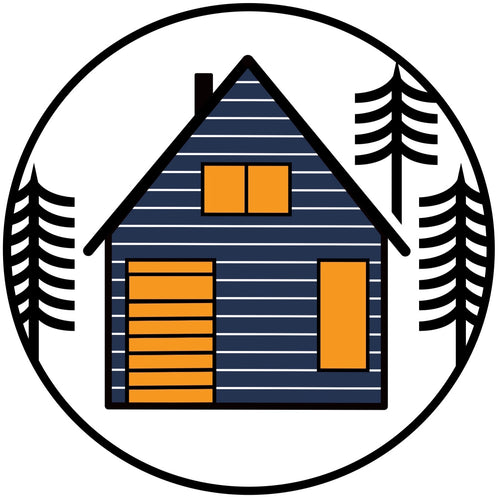The building site, and the cabin’s positioning on the site, should be chosen carefully: take into account the topography, the prevailing wind direction, the possible views, the path of the sun through the day and through the seasons. Resist the urge to place your cabin on top of the most beautiful spot. Set it a bit off to the side, so that you can continue to enjoy the beauty.
In the book ‘A Pattern Language’, architect Christopher Alexander offers this advice: “On no account place buildings in the places which are most beautiful. Consider the site and its buildings as a single living ecosystem. Leave those areas that are most precious, beautiful, comfortable and healthy as they are and build new structures on those parts of the site which are least pleasant now.”
There’s no such thing as the perfect site, and each possibility will require some compromises. Embrace the challenges, you’ll be rewarded for the effort. If at all possible, camp on your land at least once in every season, to learn the nuances of potential building sites you have in mind.
Understanding your site
-walk the land - often - and imagine your cabin at the various spots that appeal to you.
-Look for nature’s opportunities. Whether it’s hilly, wooded, rocky or flat, seek ways to merge with the natural setting.
-Avoid low areas: cold air in winter settles in low spots, as does springtime runoff. Unless you’ve planned for occasional high water with a tall foundation of piers, don’t build on a floodplain. Floods are happening more often now in places that haven’t typically been prone to flooding.
-Generaly, avoid the very highest, windiest points of land.
Sunlight
It cannot be stressed enough how important the path of the sun is to deciding on the orientation of your cabin. To best orient your cabin for natural light or shade, do some homework to understand the solar conditions at your site. If you’d enjoy rising with the sun streaming into the loft windows (or not!), the sun’s route across the sky will help determine your cabin’s best orientation on the site.
The window layout of the RavenHouse, for example, is optimized for the cabin’s long axis running roughly north-east/south-west, allowing morning light into the bank of windows along the south-east side of the cabin, and reducing the impact of the hottest summer sun with fewer windows on the north-west side.
Finally, when clearing your building site, leave as much natural vegetation in place as possible - especially large trees - at least until the cabin is complete and you’re able to see from both inside the cabin and out.
